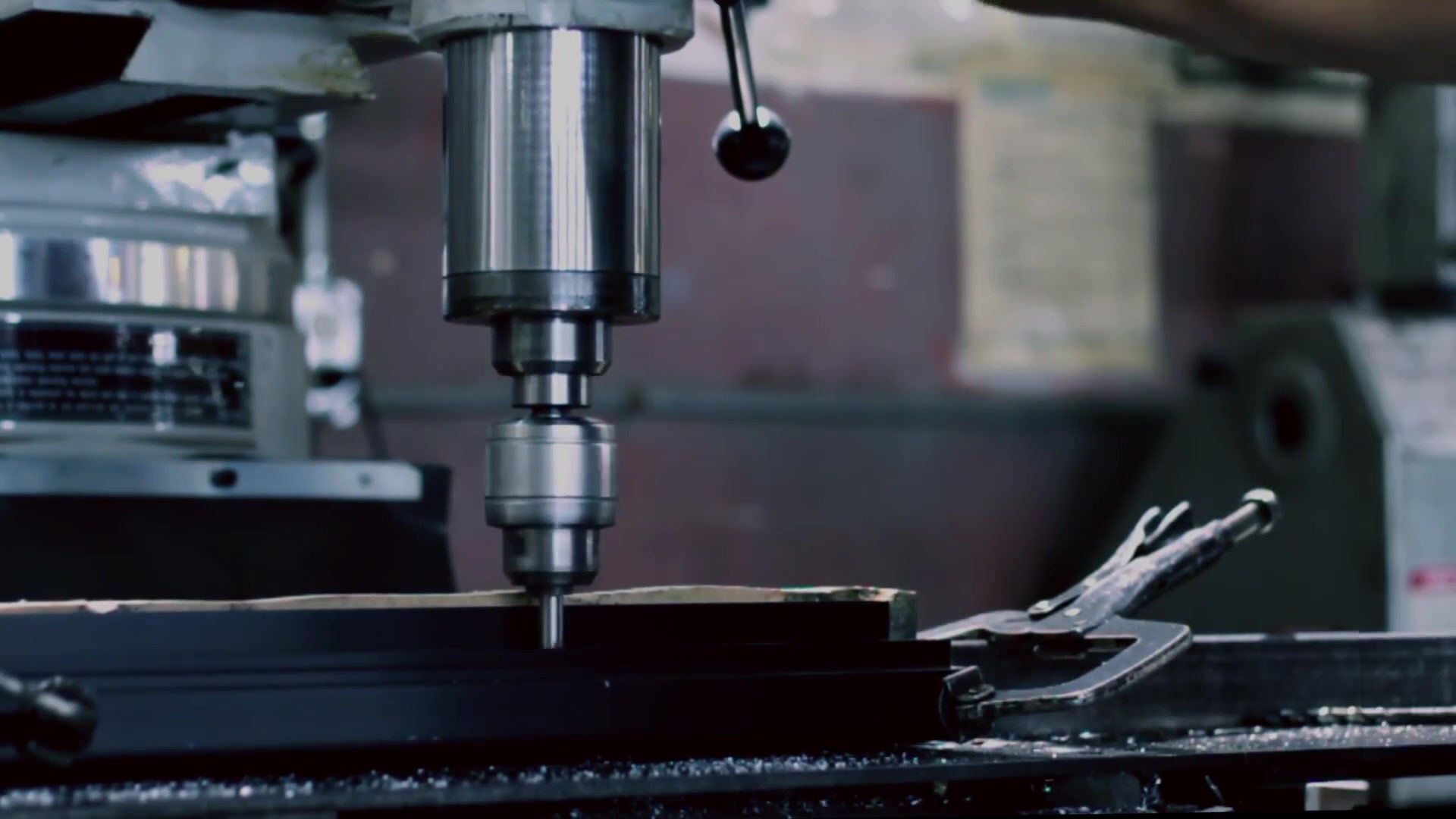


Global Custom Manufacturer, Integrator, Consolidator, Outsourcing Partner for a Wide Variety of Products & Services.
We are your one-stop source for manufacturing, fabrication, engineering, consolidation, integration, outsourcing of custom manufactured and off-shelf products & services. We also private label / white label your products with your brand name if you wish.
Choose your Language
-
Custom Manufacturing of Parts, Components, Assemblies, Finished Products, Machines and Industrial Equipment
-
Domestic & Global Contract Manufacturing
-
Manufacturing Outsourcing
-
Domestic, Global Procurement of Industrial Products
-
Private labeling / White Labeling your Products with your Brand Name
-
Product Finding & Locating Services
-
Global Design and Channel Partnership
-
Engineering Integration
-
Engineering Services
-
Global Consolidation, Warehousing, Logistics
Our MICROFLUIDIC DEVICES MANUFACTURING operations are aimed at fabrication of devices and systems in which small volumes of fluids are handled. We have the capability to design microfluidic devices for you and offer prototyping & micromanufacturing custom tailored for your applications. Examples of microfluidic devices are micro-propulsion devices, lab-on-a-chip systems, micro-thermal devices, inkjet printheads and more. In MICROFLUIDICS we have to deal with the precise control and manipulation of fluids constrained to sub-milimeter regions. Fluids are moved, mixed, separated and processed. In microfluidic systems fluids are moved and controlled either actively using tiny micropumps and microvalves and the like or passively taking advantage of capillary forces. With lab-on-a-chip systems, processes which are normally carried out in a lab are miniaturized on a single chip in order to enhance efficiency and mobility as well as reduce sample and reagent volumes.
Some major applications of microfluidic devices and systems are:
- Laboratories on a chip
- Drug screening
- Glucose tests
- Chemical microreactor
- Microprocessor cooling
- Micro fuel cells
- Protein crystallization
- Rapid drugs change, manipulation of single cells
- Single cell studies
- Tunable optofluidic microlens arrays
- Microhydraulic & micropneumatic systems (liquid pumps, gas valves, mixing systems…etc)
- Biochip early warning systems
- Detection of chemical species
- Bioanalytical applications
- On-chip DNA and protein analysis
- Nozzle spray devices
- Quartz flow cells for detection of bacteria
- Dual or multiple droplet generation chips
Our design engineers have many years of experience in modeling, designing and testing of microfluidic devices for a range of applications. Our design expertise in the area of microfluidics includes:
• Low temperature thermal bonding process for microfluidics
• Wet etching of microchannels with etch depths of nm to mm deep in glass and borosilicate.
• Grinding and polishing for a wide range of substrate thicknesses from as thin as 100 microns to over 40 mm.
• Ability to fuse multiple layers to create complex microfluidic devices.
• Drilling, dicing and ultrasonic machining techniques suitable for microfluidic devices
• Innovative dicing techniques with precise edge connection for interconnectibility of microfluidic devices
• Accurate alignment
• Variety of deposited coatings, microfluidic chips can be sputtered with metals such as platinum, gold, copper and titanium to create a wide range of features, such as embedded RTDs, sensors, mirrors and electrodes.
Besides our custom fabrication capabilities we have hundreds of off-the-shelf standard microfluidic chip designs available with hydrophobic, hydrophilic or fluorinated coatings and a wide range of channel sizes (100 nanometers to 1mm), inputs, outputs, different geometries such as circular cross, pillar arrays and micromixer. Our microfluidic devices offer excellent chemical resistance and optical transparency, high temperature stability up to 500 Centigrade, high pressure range up to 300 Bar. Some popular microfluidic off-shelf chips are:
MICROFLUIDIC DROPLET CHIPS: Glass Droplet Chips with different junction geometries, channel sizes and surface properties are available. Microfluidic droplet chips have excellent optical transparency for clear imaging. Advanced hydrophobic coating treatments enable water-in-oil droplets to be generated as well as oil-in-water droplets formed in the untreated chips.
MICROFLUIDIC MIXER CHIPS: Enabling mixing of two fluid streams within miliseconds, the micromixer chips benefit a wide range of applications including reaction kinetics, sample dilution, rapid crystallisation and nanoparticle synthesis.
SINGLE MICROFLUIDIC CHANNEL CHIPS: AGS-TECH Inc. offers single channel microfluidic chips with one inlet and one outlet for several applications. Two different chip dimensions are available off-the-shelf (66x33mm and 45x15mm). We also stock compatible chip holders.
CROSS MICROFLUIDIC CHANNEL CHIPS: We also offer microfluidic chips with two simple channels crossing each other. Ideal for droplet generation and flow focusing applications. Standard chip dimensions are 45x15mm and we have a compatible chip holder.
T-JUNCTION CHIPS: The T-Junction is a basic geometry used in microfluidics for liquid contacting and droplet formation. These microfluidic chips are available in a number of forms including thin layer, quartz, platinum coated, hydrophobic and hydrophilic versions.
Y-JUNCTION CHIPS: These are glass microfluidic devices designed for a wide range of applications including liquid-liquid contacting and diffusion studies. These microfluidic devices feature two connected Y-Junctions and two straight channels for observation of microchannel flow.
MICROFLUIDIC REACTOR CHIPS: Microreactor chips are compact glass microfluidic devices designed for rapid mixing and reaction of two or three liquid reagent streams.
WELLPLATE CHIPS: This is a tool for analytical research and clinical diagnostic laboratories. Wellplate chips are for holding small droplets of reagents or groups of cells in nano-litre wells.
MEMBRANE DEVICES: These membrane devices are designed to be used for liquid-liquid separation, contacting or extraction, cross-flow filtration and surface chemistry reactions. These devices benefit from a low dead volume and a disposable membrane.
MICROFLUIDIC RESEALABLE CHIPS: Designed for microfluidic chips that can be opened and resealed, the resealable chips enable up to eight fluidic and eight electrical connections and deposition of reagents, sensors or cells onto the channel surface. Some applications are cell culture and analysis, impedance detection and biosensor testing.
POROUS MEDIA CHIPS: This is a glass microfluidic device designed for statistical modeling of a complex porous sandstone rock structure. Among the applications of this microfluidic chip are research in earth science & engineering, petrochemical industry, environmental testing, groundwater analysis.
CAPILLARY ELECTROPHORESIS CHIP (CE chip): We offer capillary electrophoresis chips with and without integrated electrodes for DNA analysis and separation of biomolecules. Capillary electrophoresis chips are compatible with encapsulates of dimensions 45x15mm. We have CE chips one with classical crossing and one with T-crossing.
All needed accessories such as chip holders, connectors are available.
Besides microfluidic chips, AGS-TECH offers a wide range of pumps, tubing, microfluidic systems, connectors and accessories. Some off-shelf microfluidic systems are:
MICROFLUIDIC DROPLET STARTER SYSTEMS: Syringe-based droplet starter system provides a complete solution for the generation of monodispersed droplets that range from 10 to 250 micron diameter. Operating over wide flow ranges between 0.1 microliters/min to 10 microliters/min, the chemically resistant microfluidics system is ideal for initial concept work and experimentation. The pressure-based droplet starter system on the other hand is a tool for preliminary work in microfluidics. The system provides a complete solution containing all needed pumps, connectors and microfluidic chips enabling the production of highly monodispersed droplets ranging from 10 to 150 microns. Operating over a wide pressure range between 0 to 10 bars, this system is chemically resistant and its modular design makes it easily expandable for future applications. By providing a stable liquid flow, this modular toolkit eliminates dead volume and sample waste to effectively reduce associated reagent costs. This microfluidic system offers the ability to provide a quick liquid changeover. A lockable pressure chamber and an innovative 3-way chamber lid allow simultaneous pumping of up to three liquids.
ADVANCED MICROFLUIDIC DROPLET SYSTEM: A modular microfluidic system that enables production of extremely consistent sized droplets, particles, emulsions, and bubbles. The advanced microfluidic droplet system uses flow focusing technology in a microfluidic chip with a pulseless liquid flow to produce monodispersed droplets between nanometers and hundreds of microns size. Well suited for encapsulation of cells, producing beads, controlling nanoparticle formation etc. Droplet size, flow rates, temperatures, mixing junctions, surface properties and order of additions can be quickly varied for process optimization. The microfluidic system contains all the parts required including pumps, flow sensors, chips, connectors and automation components. Accessories are also available, including optical systems, larger reservoirs and reagent kits. Some microfluidics applications for this system are encapsulation of cells, DNA and magnetic beads for research and analysis, drug delivery via polymer particles and drug formulation, precision manufacturing of emulsions and foams for food and cosmetics, production of paints and polymer particles, microfluidics research on droplets, emulsions, bubbles and particles.
MICROFLUIDIC SMALL DROPLET SYSTEM: An ideal system for producing and analyzing microemulsions that offer increased stability, a higher interfacial area and the capacity to solubilize both aqueous and oil-soluble compounds. Small droplet microfluidic chips allow the generation of highly monodispersed micro-droplets ranging from 5 to 30 microns.
MICROFLUIDIC PARALLEL DROPLET SYSTEM: A high throughput system for the production of up to 30,000 monodispersed microdroplets per second ranging from 20 to 60 microns. The microfluidic parallel droplet system allows users to create stable water-in-oil or oil-in-water droplets facilitating a broad range of applications in drug and food production.
MICROFLUIDIC DROPLET COLLECTION SYSTEM: This system is well suited for the generation, collection and analysis of monodispersed emulsions. The microfluidic droplet collection system features the droplet collection module that allows emulsions to be collected without flow disruption or droplet coalescence. The microfluidic droplet size can be accurately adjusted and quickly changed enabling full control over emulsion characteristics.
MICROFLUIDIC MICROMIXER SYSTEM: This system is made of a microfluidic device, precision pumping, microfluidic elements and software to obtain excellent mixing. A lamination-based compact micromixer glass microfluidic device allows rapid mixing of two or three fluid streams in each of the two independent mixing geometries. Perfect mixing can be achieved with this microfluidic device at both high and low flow rate ratios. The microfluidic device, and its surrounding components offer excellent chemical stability, high visibility for optics, and good optical transmission. The micromixer system performs exceptionally fast, works in continuous flow mode and can completely mix two or three fluid streams within milliseconds. Some applications of this microfluidic mixing device are reaction kinetics, sample dilution, improved reaction selectivity, rapid crystallization and nanoparticle synthesis, cell activation, enzyme reactions and DNA hybridization.
MICROFLUIDIC DROPLET-ON-DEMAND SYSTEM: This is a compact and portable droplet-on-demand microfluidic system to generate droplets of up to 24 different samples and store up to 1000 droplets with sizes down to 25 nanoliters. The microfluidic system offers excellent control of droplet size and frequency as well as allowing the use of multiple reagents to create complex assays quickly and easily. Microfluidic droplets can be stored, thermally cycled, merged or split from nanoliter to picoliter droplets. Some applications are, generation of screening libraries, cell encapsulation, encapsulation of organisms, automation of ELISA tests, preparation of concentration gradients, combinatorial chemistry, cell assays.
NANOPARTICLE SYNTHESIS SYSTEM: Nanoparticles are smaller than 100nm and benefit a range of applications such as the synthesis of silicon based fluorescent nanoparticles (quantum dots) to label biomolecules for diagnostic purposes, drug delivery, and cellular imaging. Microfluidics technology is ideal for nanoparticle synthesis. Reducing reagent consumption, it allows tighter particle size distributions, improved control over reaction times and temperatures, as well as better mixing efficiency.
MICROFLUIDIC DROPLET MANUFACTURE SYSTEM: High-throughput microfluidic system that facilitates production of up to a tonne of highly monodispersed droplets, particles or emulsion a month. This modular, scalable and highly flexible microfluidic system allows up to 10 modules to be assembled in parallel, enabling identical conditions for up to 70 microfluidic chip droplet junctions. Mass-production of highly monodispersed microfluidic droplets ranging between 20 microns and 150 microns is possible that can be flowed directly off the chips, or into tubes. Applications include particle production - PLGA, gelatine, alginate, polystyrene, agarose, drug delivery in creams, aerosols, bulk precision manufacturing of emulsions and foams in food, cosmetics, paint industries, nanoparticle synthesis, parallel micromixing and micro-reactions.
PRESSURE-DRIVEN MICROFLUIDIC FLOW CONTROL SYSTEM: The closed-loop smart flow control provides control of flow rates from nanoliters/min to mililiters/min, at pressures from 10 bar down to vacuum. A flow rate sensor connected in-line between the pump and the microfluidic device facilitates users to enter a flow rate target directly on the pump without the need for a PC. Users will get smoothness of pressure and repeatability of volumetric flow in their microfluidic devices. Systems can be extended to multiple pumps, which will all control flow rate independently. To operate in flow control mode, the flow rate sensor needs to be connected to the pump using either the sensor display or sensor interface.


















